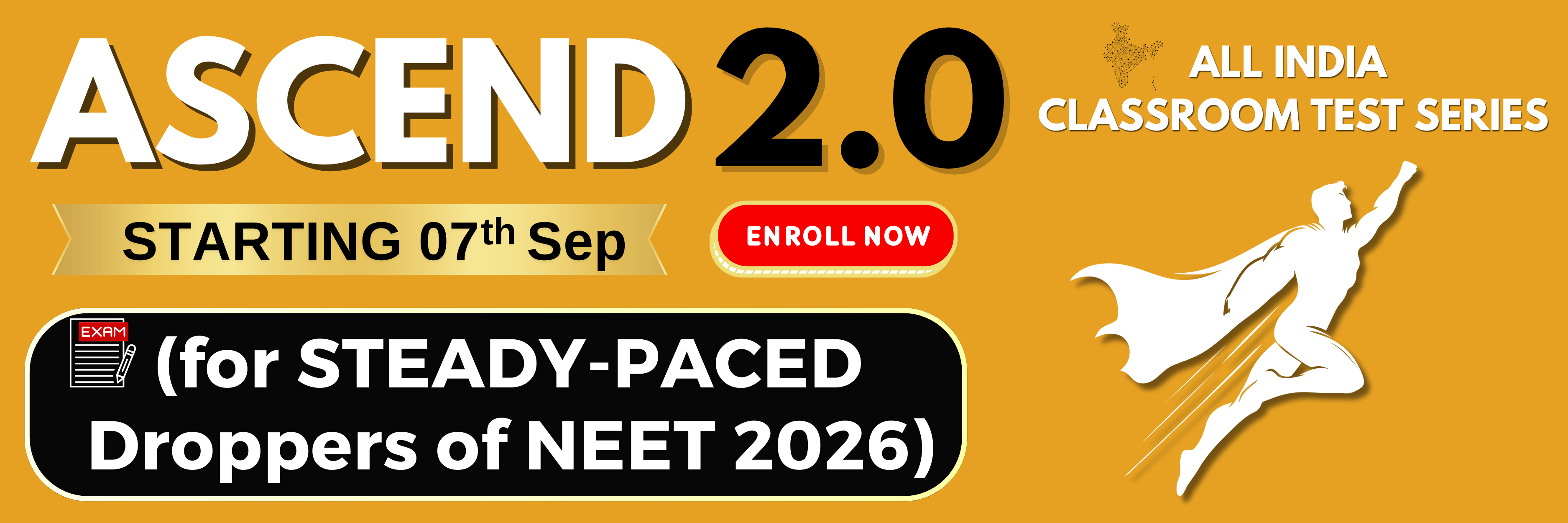Given below are two statements:
Assertion (A):
Wind pollinated flowers have large feathery stigma to trap pollen grains.
Reason (R):
Wing pollination is common in plants like Amorphophallus and Yucca.
1.
Both (A) and (R) are true and (R) is the correct explanation of (A).
2.
Both (A) and (R) are true but (R) is not the correct explanation of (A).
3.
(A) is true but (R) is false.
4.
Both (A) and (R) are false.
Subtopic: Pollination & Outbreeding Devices |
78%
From NCERT
Please attempt this question first.
Hints
Please attempt this question first.
Given below are two statements:
| Assertion (A): | Geitonogamy involves a pollinating agent. |
| Reason (R): | Genetically geitonogamy is similar to xenogamy |
| 1. | Both (A) and (R) are true and (R) is the correct explanation of (A). |
| 2. | Both (A) and (R) are true but (R) is not the correct explanation of (A). |
| 3. | (A) is true but (R) is false. |
| 4. | Both (A) and (R) are false. |
Subtopic: Pollination & Outbreeding Devices |
80%
From NCERT
Please attempt this question first.
Hints
Please attempt this question first.
Given below are two statements:
| Assertion (A): | Embryo development precedes endosperm development. |
| Reason (R): | Early stages of embryogeny are different in both monocots and dicots though seeds are similar. |
| 1. | Both (A) and (R) are true and (R) is the correct explanation of (A). |
| 2. | Both (A) and (R) are true but (R) is not the correct explanation of (A). |
| 3. | (A) is true but (R) is false. |
| 4. | Both (A) and (R) are false. |
Subtopic: Embryo |
63%
From NCERT
Please attempt this question first.
Hints
Please attempt this question first.
Given below are two statements:
| Assertion (A): | Parthenocarpic fruits are seedless. |
| Reason (R): | Fruits developing after fertilisation are called parthenocarpic fruits. |
| 1. | Both (A) and (R) are true and (R) is the correct explanation of (A). |
| 2. | Both (A) and (R) are true but (R) is not the correct explanation of (A). |
| 3. | (A) is true but (R) is false. |
| 4. | Both (A) and (R) are false. |
Subtopic: Fruit |
85%
From NCERT
Please attempt this question first.
Hints
Please attempt this question first.
Given below are two statements:
| Assertion (A): | In Papaya, both autogamy and geitonogamy are absent. |
| Reason (R): | Papaya is dioecious plant. |
| 1. | Both (A) and (R) are true and (R) is the correct explanation of (A). |
| 2. | Both (A) and (R) are true but (R) is not the correct explanation of (A). |
| 3. | (A) is true but (R) is false. |
| 4. | Both (A) and (R) are false. |
Subtopic: Pollination & Outbreeding Devices |
85%
From NCERT
Please attempt this question first.
Hints
Please attempt this question first.
The distal end of the filament of stamen is attached to the
(a) Sepal
(b) Thalamus
(c) Petal
(d) Anther
The correct one(s) is/are
1. (c) only
2. (d) only
3. (b) and (c)
4. (d) and (c)
(a) Sepal
(b) Thalamus
(c) Petal
(d) Anther
The correct one(s) is/are
1. (c) only
2. (d) only
3. (b) and (c)
4. (d) and (c)
Subtopic: Stamen: Anther |
56%
From NCERT
Please attempt this question first.
Hints
Please attempt this question first.
In typical angiosperms, the mature embryo sac has A antipodal cells, B Polar nuclei and C egg cell
Select the correct option to fill in the blanks.
1. A - three, B - two, C - one
2. A - two, B - two, C - one
3. A - three, B - one, C - one
4. A - two, B - three, C - one
Select the correct option to fill in the blanks.
1. A - three, B - two, C - one
2. A - two, B - two, C - one
3. A - three, B - one, C - one
4. A - two, B - three, C - one
Subtopic: Pistil: Ovule |
90%
From NCERT
Please attempt this question first.
Hints
Please attempt this question first.
For a typical angiospermic anther, which of the following terms is not used?
1. Integumented
2. Bilobed
3. Dithecous
4. Tetrasporangiate
1. Integumented
2. Bilobed
3. Dithecous
4. Tetrasporangiate
Subtopic: Stamen: Anther | Pistil: Ovule |
88%
From NCERT
Please attempt this question first.
Hints
Please attempt this question first.
Read the following features of flowers in a plant and select the agent for pollination accordingly.
A. Sticky pollen grains.
B. Colorful flowers.
C. Flower with pleasant odour and nectar.
1. Wind
2. Water
3. Insects
4. Earthworm
A. Sticky pollen grains.
B. Colorful flowers.
C. Flower with pleasant odour and nectar.
1. Wind
2. Water
3. Insects
4. Earthworm
Subtopic: Pollination & Outbreeding Devices |
94%
From NCERT
Please attempt this question first.
Hints
Please attempt this question first.
Which structure in stamen develops into pollen sac?
1. Stalk
2. Endothecium
3. Sporogenous tissue
4. Microsporangium
1. Stalk
2. Endothecium
3. Sporogenous tissue
4. Microsporangium
Subtopic: Stamen: Microsporangium |
76%
From NCERT
Please attempt this question first.
Hints
Please attempt this question first.






